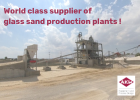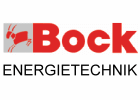INFO
This is the basic company information. The company provides additional detailed information, such as website, fax and telephone numbers, contact persons, history and company data.
To get access to this information or for printout of the company profile, you need to have a valid "Profile Access" to glassglobal.com. Information for booking are available at Price Info .
Contact Info
| Address | DeVeTec GmbH Altenkesselerstr. 17 D/2 66115 Saarbrücken |
| Country | Germany |
| Get in contact with DeVeTec GmbH |
Products or Machinery
Every DeVeTec waste heat power plant is an individual solution which is matched very precisely to the needs and technical circumstances of our customers. Our engineers are therefore continuously presented with new challenges which have to be solved, because waste heat can be used as a power source for a wide range of work machines. We are today therefore in a position not only to generate electricity from waste heat, but also compressed air and cold as a power source for e.g.:
- Refrigerant compressors
- Air compressors
- For air production
- Pumps
- ... For your application!
What are the benefits of Heat to X?
After an intensive development and test period working with industrial application partners for over five years, the DeVeTec waste heat power plants are now available as part of a product family with engines in three power classes, which can be operated at six different levels. This means that unused waste heat flows between 800 kW and 2 MW can be very efficiently converted to electricity at a temperature level of more than 250 °C.
DeVeTec supplies the waste heat power plants as mobile container units consisting of the expander/generator unit, the pump unit, and the control unit. In this way, it is possible to retrofit them very simply to existing works. If required, DeVeTec can also implement the entire heat transfer technology.
The systems run completely automatically and are monitored remotely. The purpose-developed Noise & Vibration Guard monitors signs of wear, protects the engine from potential damage and, as part of preventive maintenance, minimises the risk of malfunctions.





















